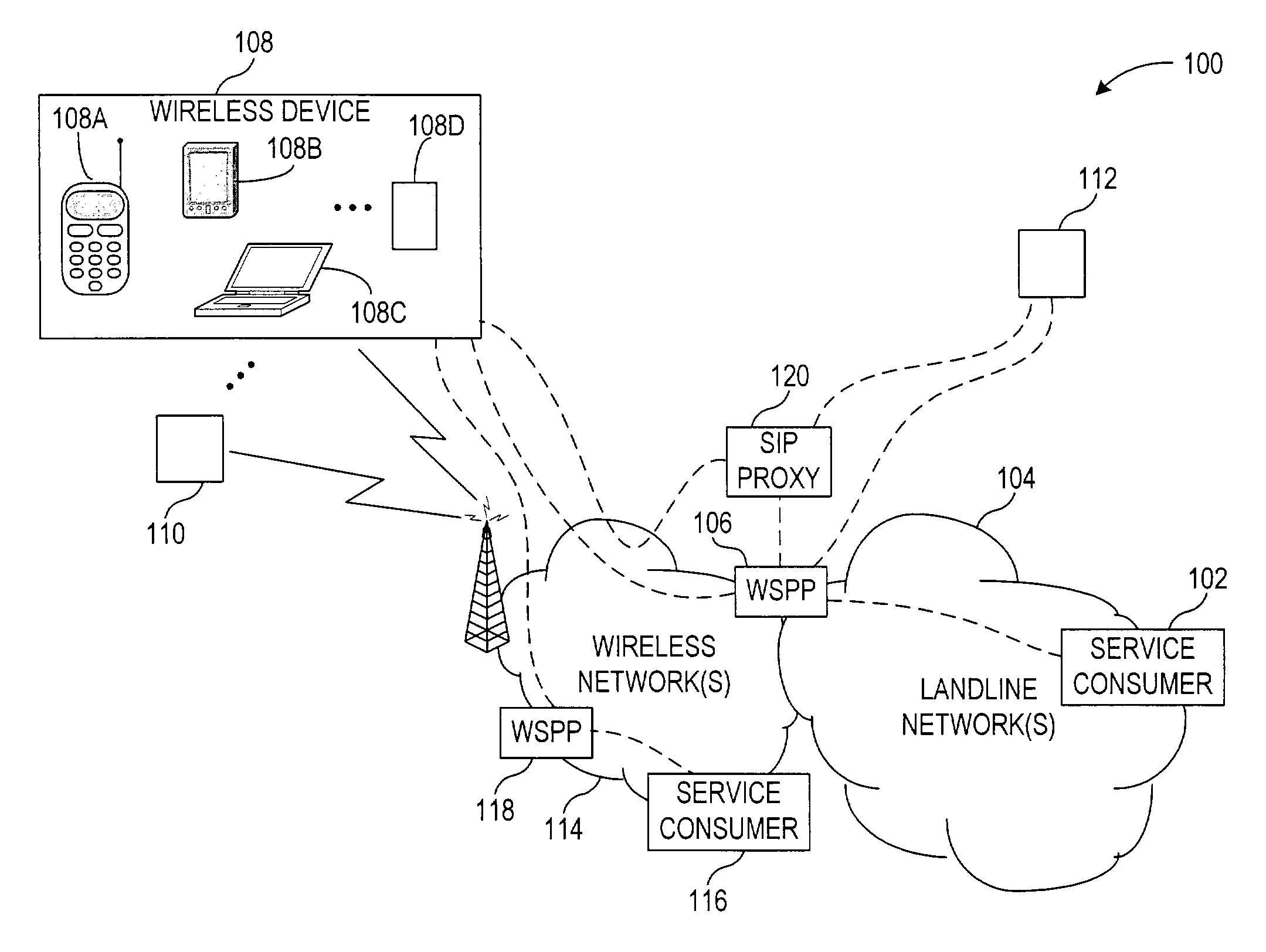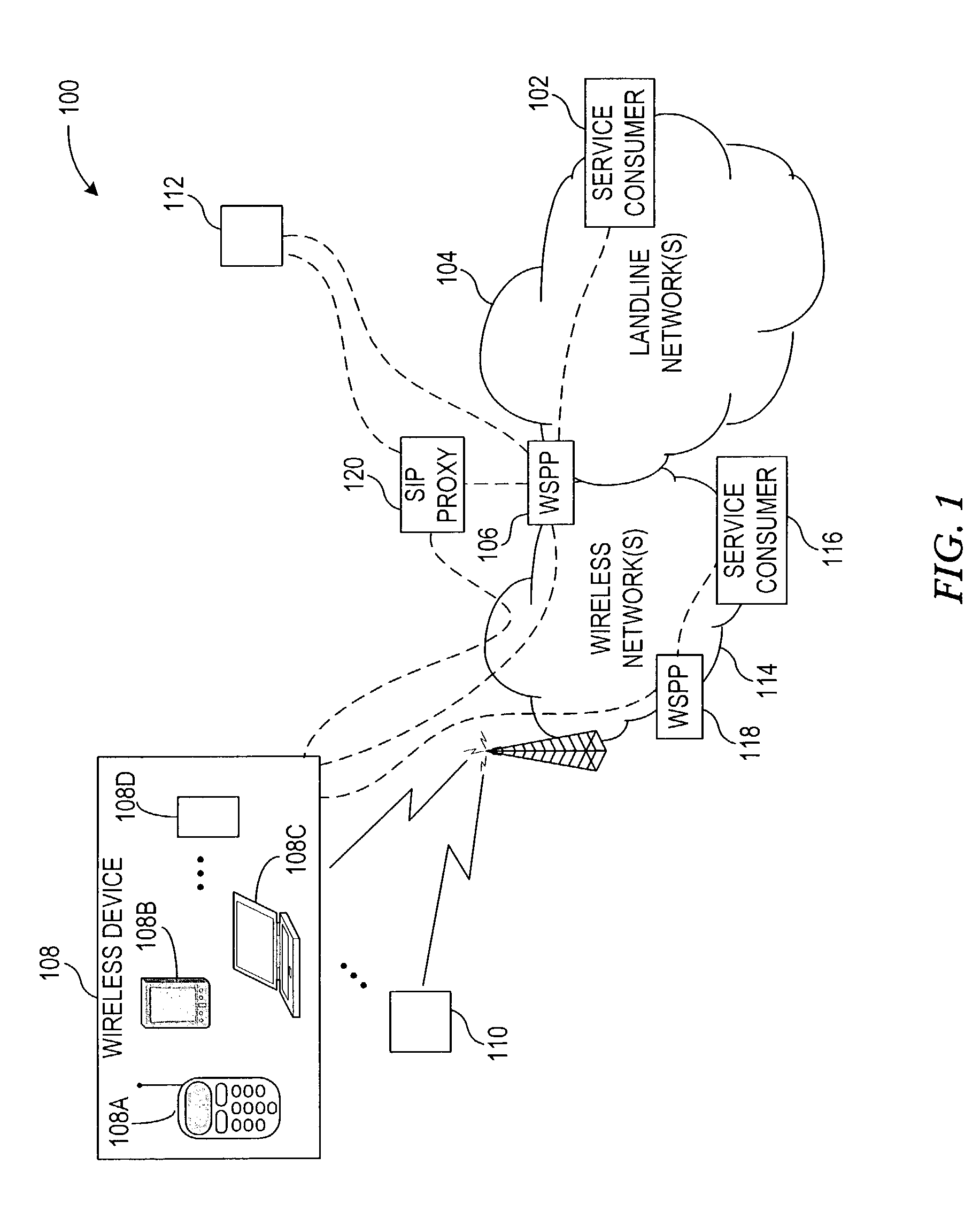System and method for addressing networked terminals via pseudonym translation
a networked terminal and pseudonym technology, applied in the field of addressing networked terminals, can solve the problems of terminal owner's privacy being protected, user privacy being compromised, web services offered or directly used by mobile terminals
- Summary
- Abstract
- Description
- Claims
- Application Information
AI Technical Summary
Benefits of technology
Problems solved by technology
Method used
Image
Examples
example 1
[0044]This URI indicates that the header element is intended by the PseudoProxy, i.e., the WSPP 200. A child element(s) referred to herein as the “PseudoID” element may also be associated with the header element to indicate the particular “type” of pseudonym, such as LibertyToken, LibertyID, Wireless Village, etc. The value of the “PseudoID” element represents a URI that is to point to the XML element containing the pseudonym in the format of the type attribute. The manner in which a URI may be resolved as a link to an XML element is known in the art, e.g., as specified in the XPointer framework specification: W3C XPointer Framework; W3C Recommendation 25 Mar. 2003. Thus, depending on the type of pseudonym conveyed to the WSPP 200 via the SOAP header, the WSPP 200 can determine the location of the XML element that contains the pseudonym in the format of the type attribute identified via “PseudoID.” An optional child element of the “PseudoProxy” header is “IDElement,” which is a stri...
example 2
[0047]The processing of the header is associated with the actor or role, as previously described in connection with Example 1 above. It may be beneficial that URIs such as those described in connection with Examples 1 and 2 are standardized by a standards body to facilitate interoperability.
[0048]A first child element described above is the “PseudoID” child element of the “PseudoProxy” element from the same namespace. As described above, it contains the type of the pseudonym in the form of a URI in the “type” attribute. This type attribute specifies the identifier system where the source identifier and the target identifier values are known. In one embodiment of the invention, these type attributes are provided in the form of URIs. Various ID types may exist, such as LibertyToken, LibertyID, Wireless Village, etc. The ID types shown in Table 1 below are illustrated as representative examples only, as any ID type may be contrived for use with the present invention.
[0049]
TABLE 1ID TYP...
PUM
 Login to View More
Login to View More Abstract
Description
Claims
Application Information
 Login to View More
Login to View More - R&D
- Intellectual Property
- Life Sciences
- Materials
- Tech Scout
- Unparalleled Data Quality
- Higher Quality Content
- 60% Fewer Hallucinations
Browse by: Latest US Patents, China's latest patents, Technical Efficacy Thesaurus, Application Domain, Technology Topic, Popular Technical Reports.
© 2025 PatSnap. All rights reserved.Legal|Privacy policy|Modern Slavery Act Transparency Statement|Sitemap|About US| Contact US: help@patsnap.com



